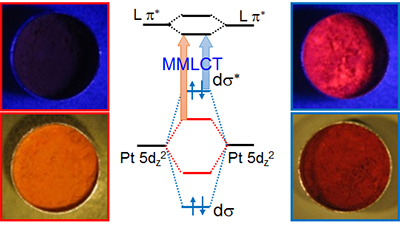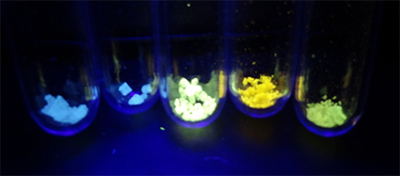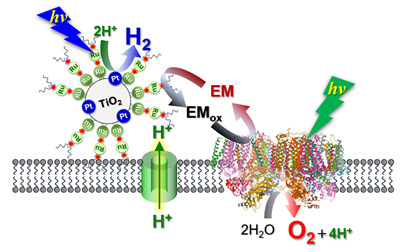Home > Research
Research
Fabrication of new multichromic materials

Platinum(II) complexes are well known and extensively studied because of their interesting electronic structures, redox activities, and emissive properties. Taking advantage of the characteristic metallophilic interactions between Pt ions, our laboratory is developing new Pt(II) complexes with diimine or cyclometalating ligands exhibiting unique multichromic behaviors. Their colorful and beautiful phenomena are very promising for fabricating intelligent sensors.
Fabrication of novel 3d-metal complexes with intense luminescence

In order to effectively utilize elements, it is important that common metals should be used to fabricate materials with strong emissivity. Although a large number of intensely luminescent metal complexes comprising noble metals have been reported for fabricating organic light-emitting diodes, the next-generation emissive materials are expected to comprise 3d-metals. Our laboratory is focusing on fabricating Cu(I) complexes exhibiting intense luminescence.
Fabrication of metal-complex assemblies for artificial photosynthesis

Artificial photosynthesis that biomimics the natural process of photosynthesis to convert sunlight and water has attracted considerable attention as one of the promising approaches to generate clean energy resources. To realize artificial photosynthesis, not only to develop highly active photosensitizers, oxidation and reduction catalysts, but also to integrate reasonably these three essential components are necessary. Our laboratory is focusing on the self-assembly of functional metal complexes on the various interfaces (e.g. surfaces of semiconductor nanoparticles, organic polymer catalyst, lipid bilayer, etc.) to integrate the three essential components for understanding the ideal structure for artificial photosynthesis.

